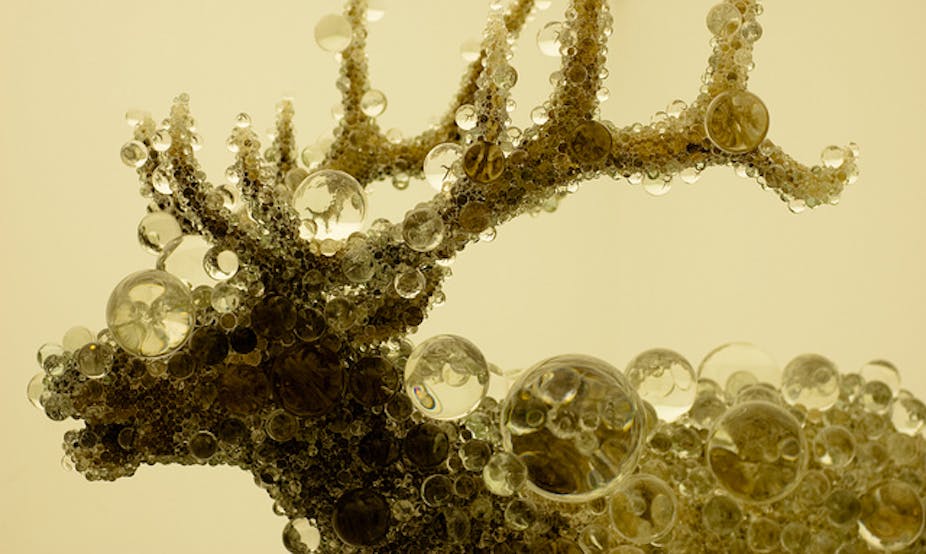Deer are arguably the most charismatic of Australia’s invasive species. Long considered a welcome addition to the Australian environment, primarily as a highly valued hunting resource, deer populations have flourished under legislation providing for their protection. However, perceptions are changing, and deer are now recognised as among Australia’s greatest pest threats.
Like rabbits and foxes, all six deer species with recognised wild populations (Fallow, Red, Sambar, Rusa, Hog, Chital) were released into Australia for aesthetic and recreational hunting purposes during the 19th century. In recent decades their populations and distributions have increased dramatically, in some cases due to natural population expansion, and in others through human agency.
Many individuals were released or escaped into the wild following the commercial rise and collapse of deer farms between the 1970s and 1990s. This period also coincided with an increase in hunters deliberately and illegally releasing them into “deer free” areas (especially Fallow, Red, Chital). Together, these activities are considered responsible for over 90% of current deer populations in Australia.
Feral populations are now scattered throughout all states and territories, particularly in south-eastern Australia, where there are few areas unoccupied by deer. Bioclimatic modelling suggests that all deer species currently occupy a fraction of their potential distribution in Australia and have great capacity to expand, especially into northern Australia.
Deer are among the least studied mammal species in Australia and our understanding of their ecology in the Australian environment is in its infancy (only two papers published in peer-reviewed scientific journals during the 20th century).
Several more recent studies have been conducted, including the first investigations of ecological impacts of deer. Evidence is revealing that some native plant species and ecological communities are being seriously damaged, primarily by browsing/grazing and antler rubbing. In the worst cases deer are altering the structure and composition of vegetation communities and disrupting ecological processes (especially in rainforest).
Additional impacts of deer include:
- facilitating access for introduced predators by creating paths in dense vegetation
- maintaining elevated populations of wild dogs (which feed on carcases dumped by hunters)
- competing with native herbivores
- causing erosion, which affects water quality
- trampling sensitive areas (such as alpine bogs, mossbeds, wetlands)
- spreading weeds
- hindering revegetation efforts
- potentially spreading pathogens affecting agriculture (such as foot and mouth disease) and human health (including Leptospirosis and Cryptosporidium).

Deer also consume and damage agricultural and horticultural crops, consume stock feed (silage/hay), compete with livestock, damage fences and are known to kill and injure livestock (directly – stags with their antlers, and indirectly – by spooking).
Farmers are frustrated by deer, especially when control efforts are limited and illegal hunting is rampant (livestock shot and spooked at night, fences cut, trespassing). Some farmers are shooting up to 100 deer per year. Deer are increasingly a nuisance in urban areas, damaging gardens and causing road accidents.
Very little is being done to manage the abundance of deer and their environmental impacts. The main management option used, albeit rarely and patchily, is targeted shooting. Recreational hunting does not provide population regulation and only marginally reduces the rate of population increase. This is despite an estimated legal harvest of 41,000 deer - including 34,000 Sambar - in Victoria in 2011.
Another option is deer exclusion fencing, which has been erected around some populations of threatened plant species.
However effective control measures don’t exist on the scale warranted (especially in forests), which is concerning when ecological and agricultural impacts of deer continue to increase.
Despite the serious effects of deer in Australia, the legislation and management of these introduced species is highly inconsistent across the continent. Some states and territories consider feral deer to be pests (WA, SA, QLD, NT, ACT). But states with the largest deer populations (VIC, NSW, TAS) give deer full or partial protection status and manage deer primarily for recreational hunting. This is in spite of recognition under environmental legislation that “deer” and “Sambar” are threatening processes to biodiversity in NSW and Victorian jurisdictions, respectively.
These states require hunters to possess game hunting licences and impose various restrictions and regulations(such as bag limits, seasons, spotlighting bans), while farmers must obtain destruction permits to cull deer. These impediments to appropriate management of deer stem from the pressure of vocal hunting organisations that advocate for deer conservation and increased hunting opportunity.
Effectively, the three south-eastern state governments hold that the desire of some citizens to shoot deer on public land for sport is of greater value than the conservation of our natural heritage and the burden imposed by deer on farmers.
Maintaining deer as protected is a major hurdle preventing the implementation of effective control measures in the parts of Australia where these measures are most needed.

